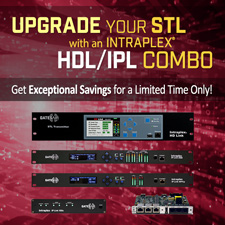Tuesday, November 19, 2013
Transmission TCO. Really? Yes, Really.
by Bill Betts, Product Marketing
Total Cost of Ownership – TCO. You see it used everywhere these days: when shopping for a new car, investing in an IT system, assessing manufacturing equipment and even the deployment of lap top computers for business – and it’s now the latest buzz word for the transmission industry. But what does it really mean for broadcasters? Is it just the efficiency of the power amplifier? Cranking up that number is easy, if you don’t mind narrowing the bandwidth or sacrificing error correction. But I think that the key word is “total”, so let’s take a look at the myriad of factors that make up TCO in a transmission system.
The first, and most obvious, is the capital investment of purchasing a transmitter. But then you have to put it somewhere and commission it. In many areas, site space is at a premium and is charged accordingly. Then you need to run it, and keep your signal on the air (that’s how you, the broadcaster or network operator get paid, right?), so you need to look at transmitter power consumption including cooling, control, exciters, drivers, PA’s, etc. Next you have the AVR’s or UPS systems that may be in the AC path, along with AC Isolation transformers, or Step-up/Step-Down Transformers ahead of the transmitter. Another big factor is getting rid of the excess heat generated by the transmitter, which means factoring in heating, cooling and ventilation costs – which is another reason that overall transmitter efficiency is so important.
Keeping your signal on the air includes includes annual and routine maintenance costs (the cost to send a technical expert to the site plus any materials used), not to mention equipment repair costs including parts, shipping costs, labor and travel time to the site if something does go wrong – which it invariably will at some point during the life of the transmitter. Finally, you must consider some of the less tangible but no less important factors, like the impact of redundancy and reliability, and the potential costs of being off-air.
It all adds up. In fact, it has been estimated that the total operating costs for a typical TV transmitter are actually at least 5 times the cost of the initial product investment over a 15 year period. So what does that mean for you?
It means that you need to be an educated buyer, that’s what. Let’s face it, most of us want it all: price, performance, flexibility, serviceability, reliability AND TCO – and we deserve it! That’s why it’s so important to look at ALL of the factors that impact the total cost of ownership. Buyer beware. Make sure that the next transmitter that you buy includes:
- The latest in high efficiency technology and design throughout the transmitter, including the PA’s, power supplies, combiners, exciters and drivers – don’t forget optimized RTAC™. “Classic” may be great for cars, but….
- A compact footprint and high power density to reduce space related costs
- A fully broadband, single amplifier design that covers the entire frequency range, without the need for adjustment or tuning of any kind if a channel change becomes necessary
- A fully modular design, including separate power supplies and power amplifiers, where all components are easily accessible and hot-swappable to provide greater redundancy, lower service costs, improve the on-air reliability and reduce the frequency of site visits.
- Simpler, fast fault identification using built-in diagnostics
It’s clear that the broadcast manufacturing industry is taking important steps and investing in new technologies to improve efficiency and reduce the TCO for TV and radio transmission systems. As newer and more efficient solid state RF devices become available, they allow designers to integrate them with other energy saving techniques to further improve overall efficiency. Today, advanced PA technology along with more efficient power supplies, optimized cooling systems and other techniques are combined for optimized solutions. In the near future, on-going development will lead to even higher efficiency transmission systems. But it’s up to you to take full advantage of those advancements.
A television or radio transmitter is a big investment. It’s your livelihood, and your reputation. Make sure that you are getting the best value for your investment – you know you deserve it.
.gif)











